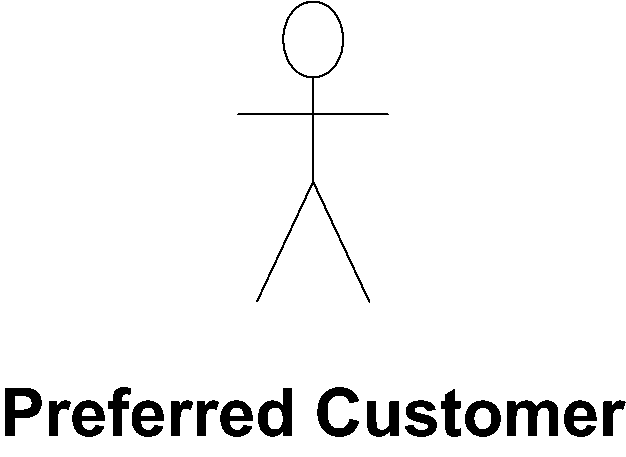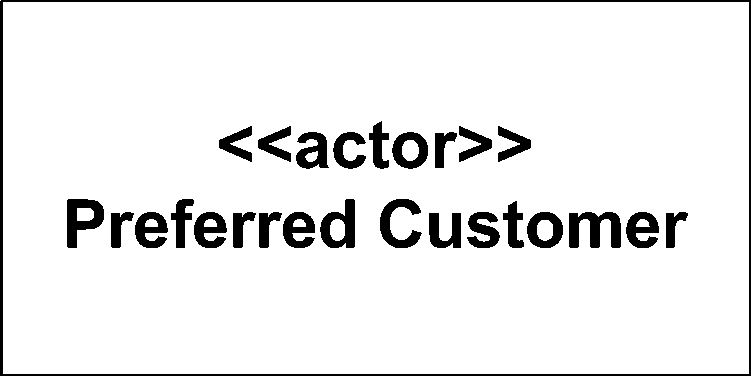Actors
A use case must be initiated by someone or something outside the scope of the use case. This interested party is called an actor. An actor doesn't need to be a human user; any external system or element outside of the use case may trigger the use case (or be the recipient of use case results) and should be modeled as an actor. For example, it is very common to model the system clock as an actor that triggers a use case at a given time or interval.
An actor can have several different representations in UML. The first is a stick figure with the name of the actor written near the icon (usually right below it). Figure 7-4 shows an actor icon.
Alternatively, an actor can be shown using the classifier notation. You represent the actor with a rectangle, with the keyword actor at the top and the name of the actor in bold immediately below that. Because actors don't typically have compartments, this representation isn't used very often. Figure 7-5 shows an actor in classifier notation.
If it is helpful, you may use custom icons to clearly distinguish different types of actors. For example, you can show an external database system using a database

Figure 7-4. An actor using the stick figure representation

Figure 7-5. An actor using classifier notation
icon while showing the system administrator ...
Get UML 2.0 in a Nutshell now with the O’Reilly learning platform.
O’Reilly members experience books, live events, courses curated by job role, and more from O’Reilly and nearly 200 top publishers.

